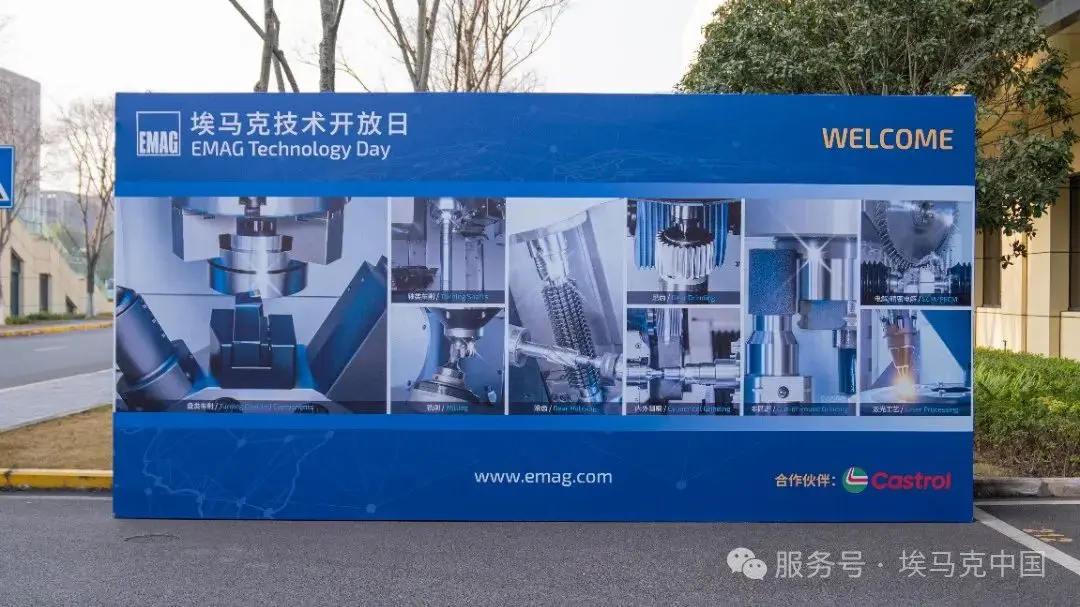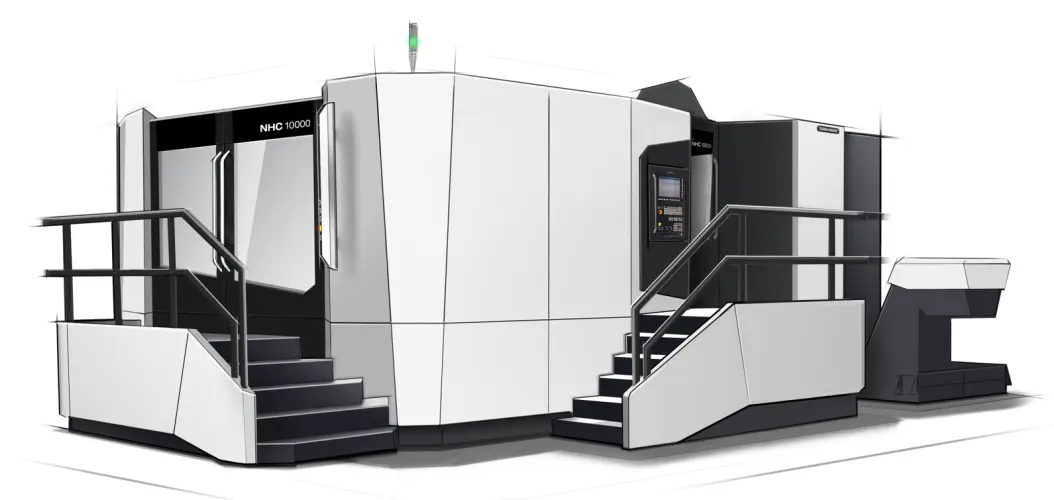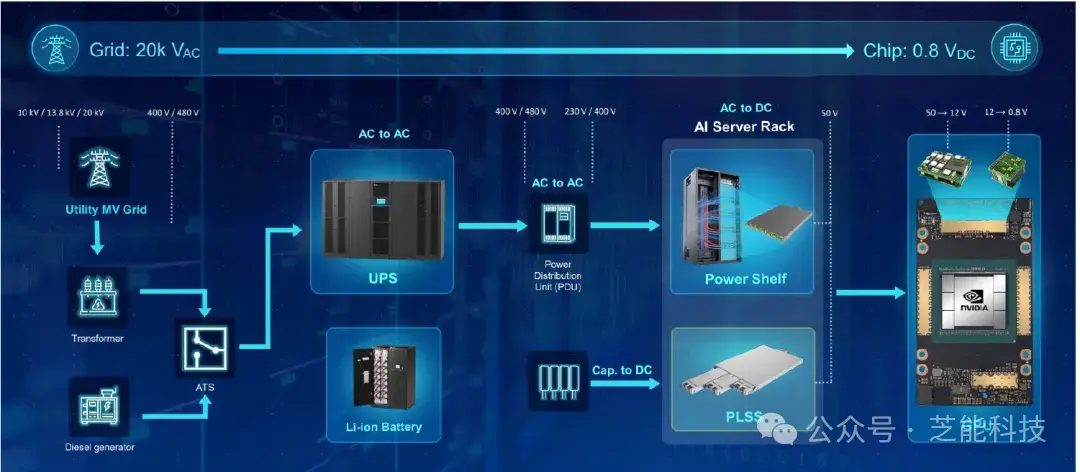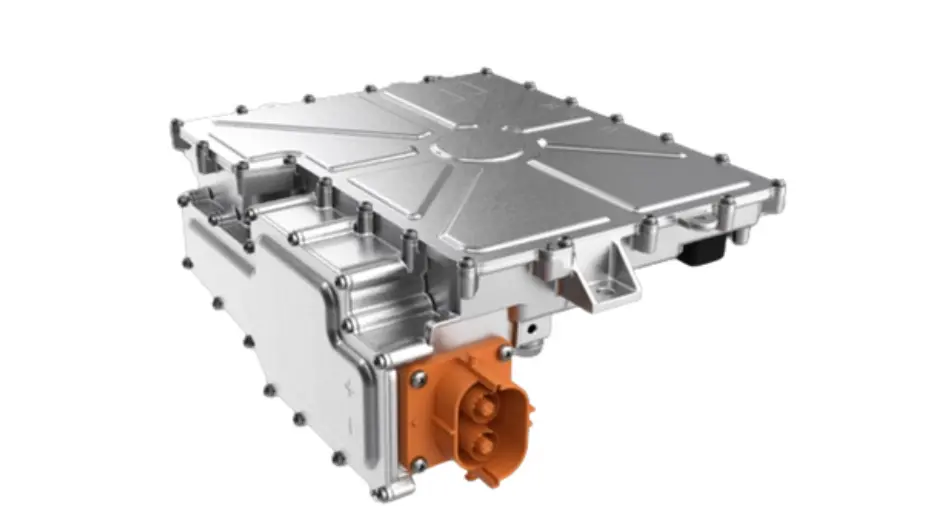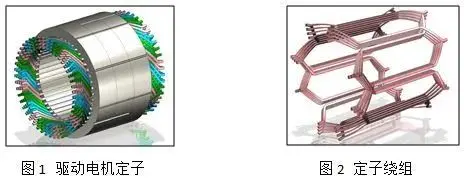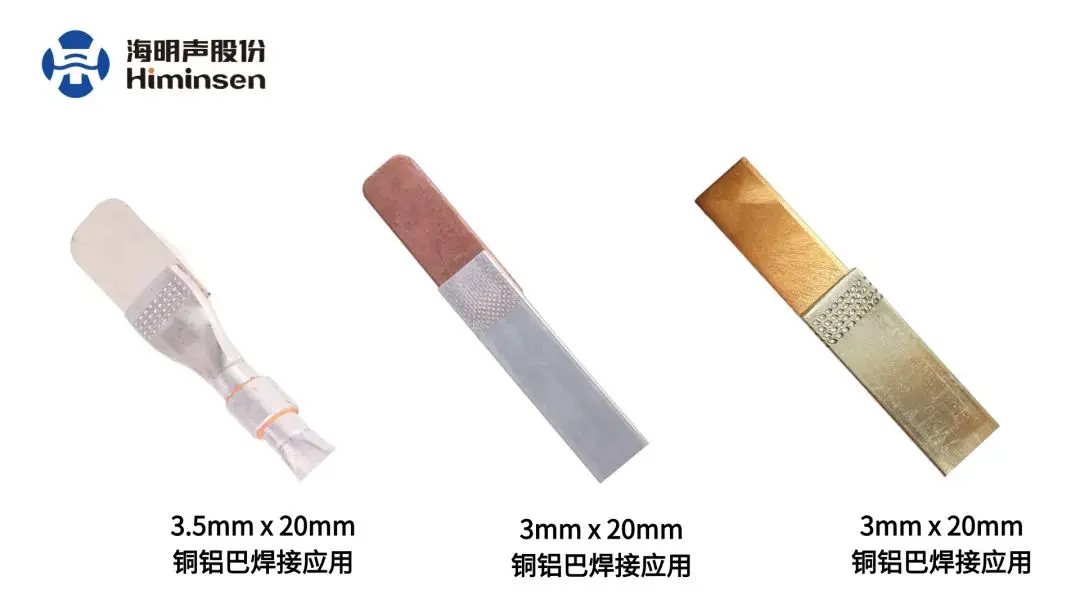汽车FWD柔性传动轴失效分析
2018-09-21 17:11:24· 来源:洞云书屋
(注:本文是译文,Original author: Anupam Singhal)Drive shaft is a mechanical part of transmission system which is used to transfer the power from engine to the wheel. It comprises two constant velocity (CV) joints and t
(注:本文是译文,Original author: Anupam Singhal)
Drive shaft is a mechanical part of transmission system which is used to transfer the power from engine to the wheel. It comprises two constant velocity (CV) joints and the actual shaft is almost universally used in front wheel drive (FWD) vehicles. The usage of drive shaft as a power transmitter in automobile is more convenience because it is less likely to become jammed or broken compared to chain-drives. In operation, drive shaft is generally subjected Torsional and bending stress due to which fatigue and fractural failures may occur. Some common causes of failures are manufacturing, design, maintenance, raw material, and the user originated faults.
传动轴是传动系统的机械部分,用于将动力从发动机传递到车轮。它包括两个等速(CV)接头,车辆在实际应用中更多地采用前轮驱动(FWD)。传动轴作为汽车动力传动装置使用更方便,因为与链条传动相比,它不太可能被卡住或断裂。在操作中,驱动轴通常受到扭转和弯曲应力,可能会发生疲劳和断裂故障。一些常见的故障原因是制造、设计、维护、原材料和用户引起的故障。
The movement of vehicles can be provided by transferring the torque produced by engines to wheels after some modification. The transfer and modification system of vehicles is called as power transmission system and have different constructive features according to the vehicle’s driving type which can be front wheel drive.
车辆的运动可以通过将发动机产生的扭矩传递到车轮上进行修正。车辆的传递和修正系统被称为动力传动系统,根据车辆的驱动类型具有不同的结构特征。
Most automobiles today use rigid driveshaft to deliver power from a transmission to the wheels. A pair of short flexible driveshaft is commonly used in cars to send power from a differential to the wheels.
现在大多数汽车都使用刚性驱动轴将动力从变速器传递到车轮。一对短柔性驱动轴通常用于从差速器向车轮传递动力。
There are different types of drive shafts in Automotive Industry:
One-piece driveshaft
Two-piece driveshaft
Slip in Tube driveshaft
汽车行业有不同类型的驱动轴:
单根驱动轴
双根驱动轴
滑动管传动轴
Drive shafts are carriers of torque. They are subject to torsion and shear stress, equivalent to the difference between the input torque and the load. They must therefore be strong enough to bear the stress, whilst avoiding too much additional weight as that would in turn increase their inertia.
驱动轴是扭矩的载体。它们受到扭转和剪切应力,相当于输入扭矩和负载之间的差异。因此,它们必须足够强大以承受压力,同时避免过多的额外重量,因为这反过来又增加了它们的惯性。
In front wheel drive operation, two universal joints (CV joints) are used for drive a shaft at constant angular velocity with a large misalignment angle. The inner end of the driveshaft has very little misalignment relative to the transmission housing, while the outer end of the driveshaft is attached to the front wheel and must continue to transmit torque whilst turning through angles up to 40 degrees.
在前轮驱动操作中,两个万向节(CV接头)用于以恒定的角速度驱动轴,具有较大的未对准角度。驱动轴的内端相对于变速器壳体几乎没有错位,而驱动轴的外端连接到前轮,并且必须继续传递扭矩,使角度达到40度。
FWD drive shaft can be solid or tubular, equal or unequal length, come with or without damper weight. Equal length shafts are used in some vehicles to help reduce torque steer. The intermediate shaft is used as a link from transaxle to the half shaft. The outer ends have a support bracket and bearing assembly. Looseness in the bearing or bracket can create vibrations. The small damper weight is called torsional damper, that is sometimes attached to one half shaft serves to dampen harmonic vibrations in the drivetrain and to stabilize the shaft as it spins, not to balance the shaft.
FWD驱动轴可以是实心的或管状的,长度相等或不等,有或没有阻尼器。等长轴用于一些车辆,以帮助减少扭矩转向。中间轴被用作从传动轴到半轴的连杆。外端具有支撑托架和轴承组件。轴承或支架的松动会产生振动。小阻尼器称为扭转阻尼器,有时连接到一个半轴用于阻尼传动系中的谐波振动,并在旋转时稳定轴,而不是平衡轴。
The outer joints generally wear faster than inner joints because of the increased range of operating angles to which they are subjected. Inner joint angles may change only 10 to 20 degrees as outer joint can undergo changes up to 40 degrees in addition to jounce and rebound as the wheels are steered.
外接头通常比内接头磨损更快,因为它们承受的工作角度范围增加了。内关节角可能只变化10至20度,因为外关节可以发生变化多达40度。这就是为什么外部关节有更高的故障率。
All CV joints are encased in a protective rubber (neoprene, natural and silicon) or thermoplastic boot. The job of the boot is to retain grease and to keep dirt and water out. The importance of the boot cannot be overemphasized because without its protection the joint does not survive. once CV joint packed with grease and installed, it requires no further maintenance. A loose or missing boot clamp, or a slit, tear, or a small puncture in the boot itself allows grease to leak out and water or dirt to enter. A milky or foamy appearance indicates water contamination. A gritty feeling when rubbed between the fingers indicates dirt. It Results, the joint is destroyed.
所有的CV接头都用防护橡胶(氯丁橡胶、天然硅)或热塑靴包住。靴子的工作是保持油脂和保持污垢和水。靴子的重要性再怎么强调也不为过,因为没有它的保护,关节就无法生存。一旦CV接头用油脂填充并安装,则不需要进一步维护。靴子的松动或丢失,或缝隙,撕裂,或靴子本身的小穿刺,会使油脂泄漏,水或污物进入。乳白色或泡沫状的外观表明水污染。手指间摩擦时的砂砾感觉是污垢。结果是接头被破坏。
Countries, where the average atmospheric temperature is approximate 40 degree, the failures mainly occur by changing the properties of grease. Grease must change its property on increasing of temperature because of changing in chemical composition. Grease becomes hard and thick on high temperature and does not operates normally. Oil present in grease may leak or vaporized which results failure of joint.
平均气温约为40度的国家,主要是润滑脂性能的改变导致的故障。由于化学成分的变化,润滑脂必须随着温度的升高而改变其性能。油脂在高温下变硬、变厚,不能正常工作。润滑油中的油可能泄漏或汽化,导致接头失效。
On the other side, road conditions are firmly effect the drive shaft. Domestic cars are manufactured on the basis of smooth road conditions but some developing countries have very rough road conditions so that premature failure may occur. A rough road condition causes the drive shaft work continuously on bumps and dips. Rough road have more dirt and dust particles, which are accumulated on the boot and in the grease. Which results abrasion of balls or tripods and joint may fail before time.
另一方面,路面状况对传动轴产生了很大的影响。国内汽车是在道路畅通的条件下制造的,但一些发展中国家的道路条件很差,所以可能会发生过早的故障。恶劣的路面状况使驱动轴在凸点和倾角上连续工作。崎岖不平的道路上有更多的灰尘和灰尘颗粒,它们堆积在靴子和油脂上。因此,球或三脚架和接头的磨损可能会提前失效。
Generally it seems that 80 % of the problems in CV joints are caused by a change in the working distance of the side shaft, 8 % by faults or negligence during installation. 8 % come from cracked axle boots which lead to a loss of lubricant, resulting in soiling of the joint. only the remaining 4 % of all joint failures have been caused by jolts and normal wear and tear of the parts.
一般看来,CV接头中的80%的问题是由侧轴的工作距离的变化引起的,8%是由于安装过程中的故障或疏忽造成的。8%来自轴靴裂纹,导致润滑剂的损失,接头的污损。只有其余4%的接头失效是由零件的颠簸和正常磨损引起的。
Drive shaft is a mechanical part of transmission system which is used to transfer the power from engine to the wheel. It comprises two constant velocity (CV) joints and the actual shaft is almost universally used in front wheel drive (FWD) vehicles. The usage of drive shaft as a power transmitter in automobile is more convenience because it is less likely to become jammed or broken compared to chain-drives. In operation, drive shaft is generally subjected Torsional and bending stress due to which fatigue and fractural failures may occur. Some common causes of failures are manufacturing, design, maintenance, raw material, and the user originated faults.
传动轴是传动系统的机械部分,用于将动力从发动机传递到车轮。它包括两个等速(CV)接头,车辆在实际应用中更多地采用前轮驱动(FWD)。传动轴作为汽车动力传动装置使用更方便,因为与链条传动相比,它不太可能被卡住或断裂。在操作中,驱动轴通常受到扭转和弯曲应力,可能会发生疲劳和断裂故障。一些常见的故障原因是制造、设计、维护、原材料和用户引起的故障。
The movement of vehicles can be provided by transferring the torque produced by engines to wheels after some modification. The transfer and modification system of vehicles is called as power transmission system and have different constructive features according to the vehicle’s driving type which can be front wheel drive.
车辆的运动可以通过将发动机产生的扭矩传递到车轮上进行修正。车辆的传递和修正系统被称为动力传动系统,根据车辆的驱动类型具有不同的结构特征。
Most automobiles today use rigid driveshaft to deliver power from a transmission to the wheels. A pair of short flexible driveshaft is commonly used in cars to send power from a differential to the wheels.
现在大多数汽车都使用刚性驱动轴将动力从变速器传递到车轮。一对短柔性驱动轴通常用于从差速器向车轮传递动力。
There are different types of drive shafts in Automotive Industry:
One-piece driveshaft
Two-piece driveshaft
Slip in Tube driveshaft
汽车行业有不同类型的驱动轴:
单根驱动轴
双根驱动轴
滑动管传动轴
Drive shafts are carriers of torque. They are subject to torsion and shear stress, equivalent to the difference between the input torque and the load. They must therefore be strong enough to bear the stress, whilst avoiding too much additional weight as that would in turn increase their inertia.
驱动轴是扭矩的载体。它们受到扭转和剪切应力,相当于输入扭矩和负载之间的差异。因此,它们必须足够强大以承受压力,同时避免过多的额外重量,因为这反过来又增加了它们的惯性。
In front wheel drive operation, two universal joints (CV joints) are used for drive a shaft at constant angular velocity with a large misalignment angle. The inner end of the driveshaft has very little misalignment relative to the transmission housing, while the outer end of the driveshaft is attached to the front wheel and must continue to transmit torque whilst turning through angles up to 40 degrees.
在前轮驱动操作中,两个万向节(CV接头)用于以恒定的角速度驱动轴,具有较大的未对准角度。驱动轴的内端相对于变速器壳体几乎没有错位,而驱动轴的外端连接到前轮,并且必须继续传递扭矩,使角度达到40度。
FWD drive shaft can be solid or tubular, equal or unequal length, come with or without damper weight. Equal length shafts are used in some vehicles to help reduce torque steer. The intermediate shaft is used as a link from transaxle to the half shaft. The outer ends have a support bracket and bearing assembly. Looseness in the bearing or bracket can create vibrations. The small damper weight is called torsional damper, that is sometimes attached to one half shaft serves to dampen harmonic vibrations in the drivetrain and to stabilize the shaft as it spins, not to balance the shaft.
FWD驱动轴可以是实心的或管状的,长度相等或不等,有或没有阻尼器。等长轴用于一些车辆,以帮助减少扭矩转向。中间轴被用作从传动轴到半轴的连杆。外端具有支撑托架和轴承组件。轴承或支架的松动会产生振动。小阻尼器称为扭转阻尼器,有时连接到一个半轴用于阻尼传动系中的谐波振动,并在旋转时稳定轴,而不是平衡轴。
The outer joints generally wear faster than inner joints because of the increased range of operating angles to which they are subjected. Inner joint angles may change only 10 to 20 degrees as outer joint can undergo changes up to 40 degrees in addition to jounce and rebound as the wheels are steered.
外接头通常比内接头磨损更快,因为它们承受的工作角度范围增加了。内关节角可能只变化10至20度,因为外关节可以发生变化多达40度。这就是为什么外部关节有更高的故障率。
All CV joints are encased in a protective rubber (neoprene, natural and silicon) or thermoplastic boot. The job of the boot is to retain grease and to keep dirt and water out. The importance of the boot cannot be overemphasized because without its protection the joint does not survive. once CV joint packed with grease and installed, it requires no further maintenance. A loose or missing boot clamp, or a slit, tear, or a small puncture in the boot itself allows grease to leak out and water or dirt to enter. A milky or foamy appearance indicates water contamination. A gritty feeling when rubbed between the fingers indicates dirt. It Results, the joint is destroyed.
所有的CV接头都用防护橡胶(氯丁橡胶、天然硅)或热塑靴包住。靴子的工作是保持油脂和保持污垢和水。靴子的重要性再怎么强调也不为过,因为没有它的保护,关节就无法生存。一旦CV接头用油脂填充并安装,则不需要进一步维护。靴子的松动或丢失,或缝隙,撕裂,或靴子本身的小穿刺,会使油脂泄漏,水或污物进入。乳白色或泡沫状的外观表明水污染。手指间摩擦时的砂砾感觉是污垢。结果是接头被破坏。
Countries, where the average atmospheric temperature is approximate 40 degree, the failures mainly occur by changing the properties of grease. Grease must change its property on increasing of temperature because of changing in chemical composition. Grease becomes hard and thick on high temperature and does not operates normally. Oil present in grease may leak or vaporized which results failure of joint.
平均气温约为40度的国家,主要是润滑脂性能的改变导致的故障。由于化学成分的变化,润滑脂必须随着温度的升高而改变其性能。油脂在高温下变硬、变厚,不能正常工作。润滑油中的油可能泄漏或汽化,导致接头失效。
On the other side, road conditions are firmly effect the drive shaft. Domestic cars are manufactured on the basis of smooth road conditions but some developing countries have very rough road conditions so that premature failure may occur. A rough road condition causes the drive shaft work continuously on bumps and dips. Rough road have more dirt and dust particles, which are accumulated on the boot and in the grease. Which results abrasion of balls or tripods and joint may fail before time.
另一方面,路面状况对传动轴产生了很大的影响。国内汽车是在道路畅通的条件下制造的,但一些发展中国家的道路条件很差,所以可能会发生过早的故障。恶劣的路面状况使驱动轴在凸点和倾角上连续工作。崎岖不平的道路上有更多的灰尘和灰尘颗粒,它们堆积在靴子和油脂上。因此,球或三脚架和接头的磨损可能会提前失效。
Generally it seems that 80 % of the problems in CV joints are caused by a change in the working distance of the side shaft, 8 % by faults or negligence during installation. 8 % come from cracked axle boots which lead to a loss of lubricant, resulting in soiling of the joint. only the remaining 4 % of all joint failures have been caused by jolts and normal wear and tear of the parts.
一般看来,CV接头中的80%的问题是由侧轴的工作距离的变化引起的,8%是由于安装过程中的故障或疏忽造成的。8%来自轴靴裂纹,导致润滑剂的损失,接头的污损。只有其余4%的接头失效是由零件的颠簸和正常磨损引起的。
举报 0
收藏 0
分享 151
-
埃马克德国总部迎来中国社科院工业经济研究所代
2025-04-15 -
埃马克这项全新应用即将在CIMT惊艳首秀!
2025-04-15 -
[转载] 机床巨头埃马克:百年跌宕再出发
2025-03-31 -
赋能电动未来,埃马克重庆技术日展示尖端制造技
2025-03-03
编辑推荐
最新资讯
-
旭化成微电子开始批量生产用于环保发
2025-04-24 16:00
-
华为、地平线、大众、东风、起亚等引
2025-04-24 08:27
-
全球产业链聚沪 共探双碳新路径 SNEC
2025-04-18 18:05
-
柯马签订具有约束力的协议收购 Autom
2025-04-17 13:01
-
高效协同新范式:比亚迪叉车领创智能
2025-04-17 10:04




![[转载] 机床巨头埃马克:百年跌宕再出发](https://img.auto-made.com/202503/31/124304211.png)
